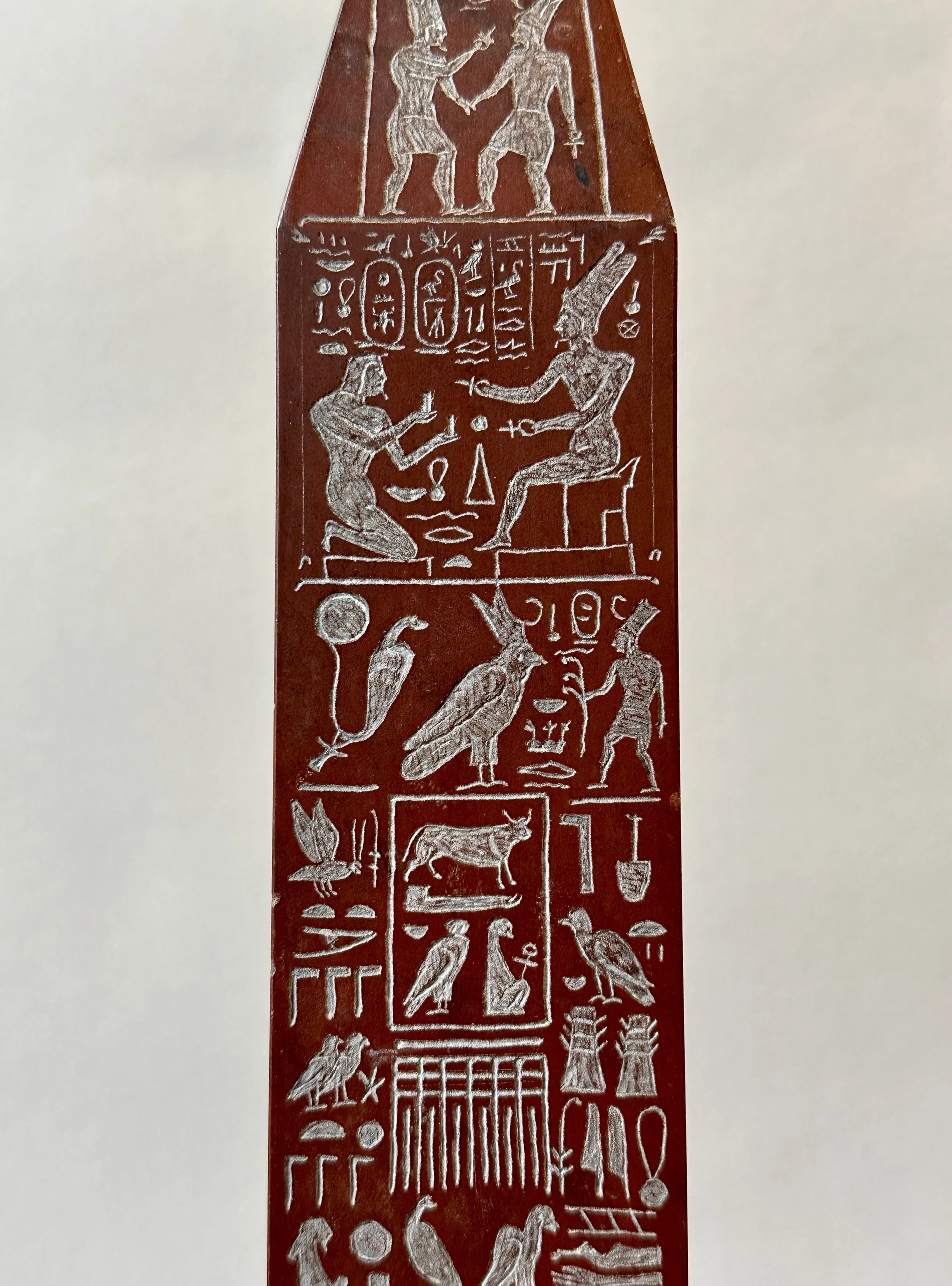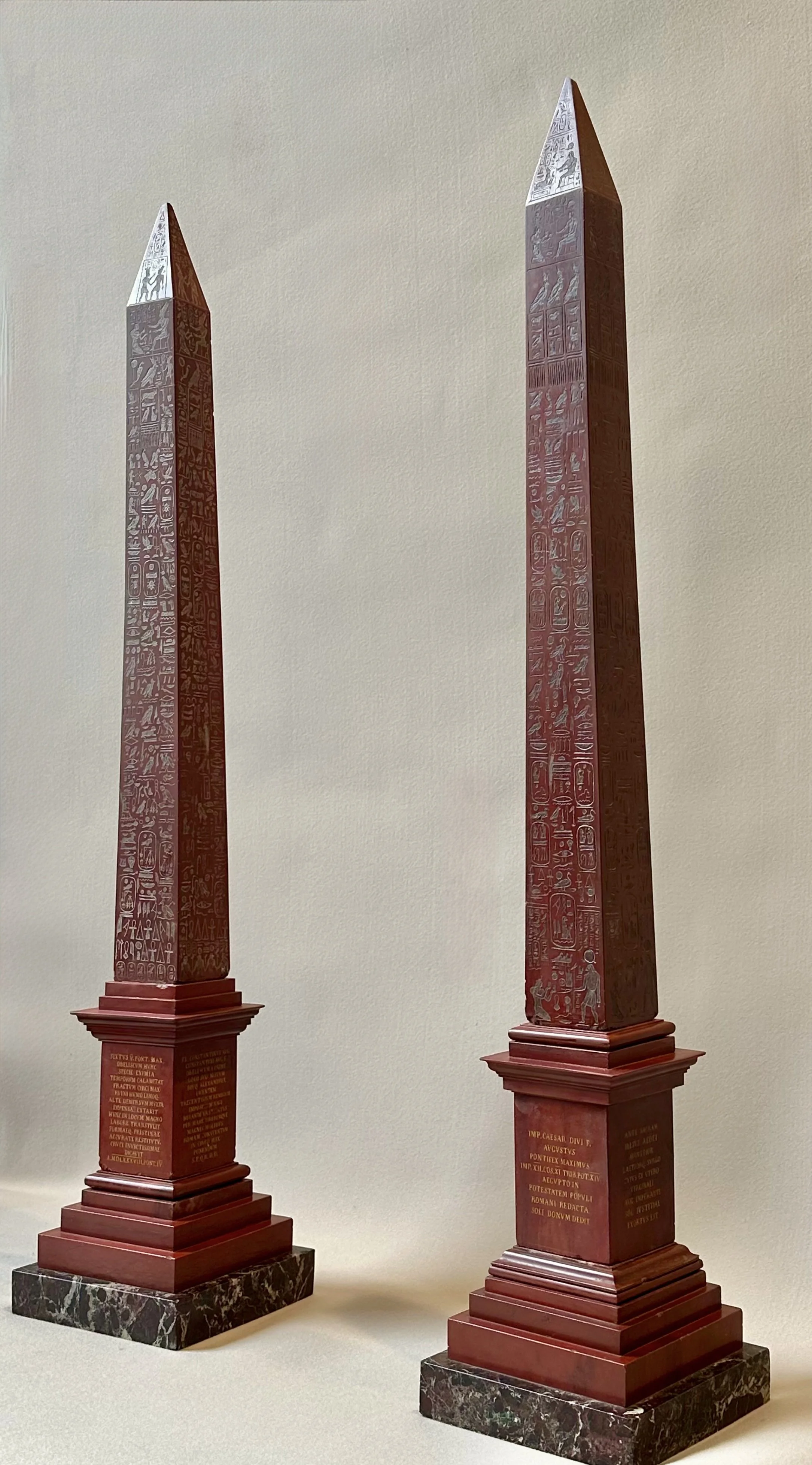Two Italian “Grand Tour” Rosso Antico Models of The Flaminian and Lateran Obelisks
Two Italian “Grand Tour” Rosso Antico Models of The Flaminian and Lateran Obelisks
Rome, Circa 1830-50
Of exceptionally large scale, each on a square rouge marble base
Height: 38 in.
Note:
The present models are almost certainly the corresponding obelisks to the Lateran and Flaminian obelisk models formerly in the collection of Mr David and the Lady Pamela Hicks, until sold: Sotheby's, London, Britwell House: the Contents of the House, 20-22 March 1979, either lot 518 or 519, and again at Sotheby’s London, 2nd May 2017, lot 120, as one of a matched pair of Flaminian and Lateran obelisks.
Each model in the matched Hicks pair corresponds exactly as the opposing model to the matched pair we have currently for sale.
The Flaminian obelisk dates from the reign of the ancient Egyptian King Seti I (13th century B.C.). Carved of granite quarried in Aswan, it is covered in hieroglyphic inscriptions on all four sides, three of which were carved during the reign of Seti I, one of which was carved later by his son, Ramses II. Originally erected in Heliopolis (now north-western Cairo), it was brought to Rome in 10 B.C. by Augustus, who dedicated it to the sun and placed it in the Circus Maximus. It was rediscovered in 1587, in three sections, together with the Lateran obelisk, and relocated to the Piazza del Popolo.
The Lateran obelisk is the tallest ancient obelisk in the world. It dates from the reign of the ancient Egyptian King Tuthmosis III (15th century BCE), and was originally erected as a single obelisk at the Temple of Amun in Karnak. Carved from red granite, it is covered in hieroglyphic inscriptions on all four sides, celebrating the reigns of Tuthmosis III and his grandson Tuthmosis IV, who completed the obelisk around 1400 BCE. In the early 4th century, Roman Emperor Constantine had the the obelisk moved by boat down the nile to Alexandria, intending for it then to be shipped to his new capital of the Roman Empire at Constantinople, but it instead it remained in Alexandria until it was moved to Rome by Constantine’s son and successor, Constantius II in 357. Like the Flaminian obelisk, it was first erected at the Circus Maximus, but after Rome was abandoned in the 5th century, it lay buried until rediscovered in 1588 under the reign of Sixtus V. It was then moved to the Piazza San Giovanni in Laterano, where it still stands today.
Condition: Structurally sound and stabilized, a few minor chips and some filled chips to bases with no loss to engraving.



